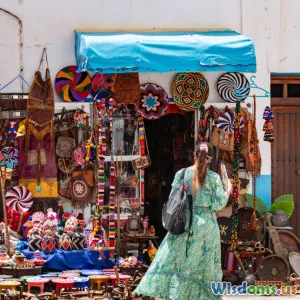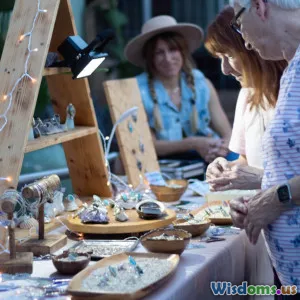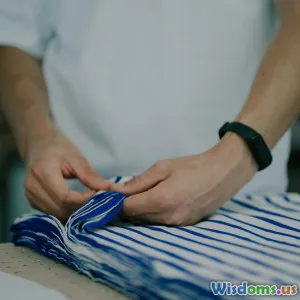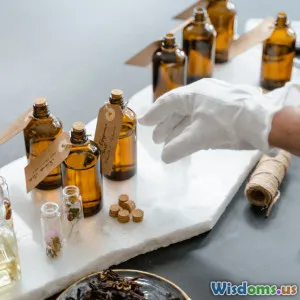
Cultural Crafts: Exploring Global Traditions
9 min read Dive into diverse cultural crafts from around the world and discover their rich traditions and techniques. (0 Reviews)
Cultural Crafts: Exploring Global Traditions
Introduction
Imagine holding in your hands a piece of history—an intricate weaving from the Andes, a hand-painted ceramic from Morocco, or an origami crane made with delicate care in Japan. Cultural crafts connect us to the stories, traditions, and identities that span centuries and continents. Far from being mere decorations, these crafts embody ancestral knowledge passed down hand-to-hand and generation-to-generation. In an era dominated by mass-produced goods, exploring cultural crafts offers a sacred gateway back to authenticity, creativity, and human connection.
This article journeys into the fascinating world of cultural crafts across the globe, showing their rich meanings, materials, and techniques. It aims to inspire lovers of DIY and handmade traditions to appreciate and even incorporate these artistic legacies into their projects.
The Soul of Culture in Handmade Objects
Handmade cultural crafts aren’t just pretty objects; they are living expressions of social identity, historical memory, and environment. Anthropologist Margaret Mead famously said, “Art is the signature of civilizations.” This is especially true in the realm of crafts where every stitch, glaze, or fold embodies distinct cultural codes and knowledge.
Why Cultural Crafts Matter
- Preservation of Heritage: Many crafts date back hundreds or thousands of years. For instance, Qom embroidery in Iran preserves tribal narratives using colorful patterns.
- Community and Identity: Indigenous crafts act as a badge of identity and social cohesion, maintaining ties within groups.
- Sustainable Practices: Traditional craft methods often rely on natural resources and eco-friendly processes.
These crafts invite us into a dialogue with history and nature, offering sustainable, meaningful alternatives to industrial consumerism.
Iconic Cultural Crafts From Around the World
Let’s explore some hallmark cultural crafts that highlight diversity in tradition, technique, and purpose.
1. Japanese Origami
Origami, the art of paper folding, transcends mere decoration. It represents patience, precision, and meditative practice rooted deeply in Japanese culture. While simple cranes symbolize peace, more complex folds showcase advanced geometric understanding.
- Materials: Traditionally washi paper made by hand from mulberry fibers
- Historical Context: Evolved since the 17th century as a celebratory and educational art
Examples like the intricate Kawasaki rose or modular kusudama balls exemplify how craft is linked to intellectual exploration in addition to aesthetic beauty.
2. Navajo Weaving (USA)
Among Native American tribes, Navajo rugs and blankets symbolize spiritual connection and cultural resilience.
- Techniques: Hand-spun wool dyed with natural pigments woven on upright looms
- Symbolism: Patterns like diamonds or zigzags convey protection and harmony
The craft survived centuries of disruption, and modern artisans both preserve tradition and innovate designs for global markets.
3. Moroccan Zellige Tilework
Zellige refers to the mosaic tilework that adorns walls, fountains, and floors across Morocco.
- Characteristics: Tiny, hand-cut geometric tiles forming elaborate symmetrical patterns
- Materials/Process: Tufa clay painted with vibrant pigments, kiln-fired for durability
These tiles are more than decoration; they reflect Islamic artistic ideas, where geometry connects spiritual and cosmic order.
4. Indian Madhubani Painting
Originating in Bihar, India, Madhubani paintings traditionally celebrate rituals through vibrant patterns and symbolism.
- Medium: Handmade paper or cloth, natural dyes from plants and minerals
- Themes: Nature, mythology, and social life depicted through bold lines and vibrant colors
Sometimes personal or political messages are woven in, proving the craft’s dynamic evolution.
5. Ghanaian Kente Cloth
Kente is a handwoven silk and cotton fabric symbolizing status and cultural pride.
- Formation: Strips woven on narrow looms and sewn into wider cloths
- Color Symbolism: For instance, gold represents royalty and wealth; green signifies growth and renewal
Worn at ceremonies and increasingly integrated into global fashion, Kente captures the intersection of tradition and modern identity.
Techniques and Materials: Tradition Meets Sustainability
A underlying theme common to cultural crafts is the close relationship between material, environment, and culture.
- Natural Fibers: Cotton, wool, hemp, and silk sourced locally sustain ecosystems—not commodities adapted for industrial manufacture.
- Natural Pigments: From indigo used in West African fabrics to cochineal reds in South American textiles, natural dyes ensure chemical-free artistry.
- Hand Tools and Skills: Traditional looms, carving knives, and weaving frames preserve artisanal knowledge.
In fact, UNESCO in programs like the Intangible Cultural Heritage list emphasizes these crafts as vital for sustainable development, connecting cultural preservation with economic empowerment.
How to Embrace Cultural Crafts in Your DIY Projects
1. Learn the Stories First
Understanding the cultural significance behind a craft fosters respect. Before replicating, research its origins, meanings, and appropriate uses. This promotes cultural appreciation rather than appropriation.
2. Source Ethically
Where possible, buy materials or finished products directly from artisans or fair-trade cooperatives. This supports livelihoods and honors traditions.
3. Start Small and Practice
Try simple origami models or beadwork inspired by Native American techniques to familiarize yourself with movements and patterns.
4. Incorporate with Creativity
Blend traditional motifs into modern crafts like greeting cards, textile prints, or home decor. This keeps tradition alive through innovation.
Conclusion
Cultural crafts, layered with history, symbolism, and sustainability, offer profound lessons for DIY enthusiasts and lovers of handmade art. They reveal that each object is not just a product but a narrative—woven, folded, or painted by the hands of ancestors with love, care, and identity.
By exploring and integrating these global traditions responsibly, we participate in a living cultural exchange that enriches our creativity and connects us deeply across time and space. Whether you’re shaping a piece of pottery, folding an origami crane, or experimenting with textile dyes, embrace the story behind your craft. In doing so, each craft project becomes a thread in an endless human tapestry of shared heritage and artistic spirit.
Let cultures inspire your hands and stories infuse your creations—because cultural crafts are not relics; they are alive, breathing, and waiting to be celebrated anew.
References and Further Reading:
- UNESCO Intangible Cultural Heritage Lists: https://ich.unesco.org/en/lists
- "The Art of Japanese Origami" by Robert Harbin
- "Textile Traditions of the Navajo Nation" by Joe Ben Wheat
- "Morocco: Traditional Craftsmanship" by Paul Benecki
- Articles from the Smithsonian American Art Museum
Explore these treasures with curiosity and respect, and your next handmade piece can connect you meaningfully with cultures worldwide.
Rate the Post
User Reviews
Popular Posts





















